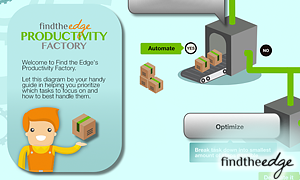 In my last article I explained a few simple ways to narrow down your prospect lists so you can use the ’familiarity’ principle to attract more interested prospects into your sales pipeline.
In my last article I explained a few simple ways to narrow down your prospect lists so you can use the ’familiarity’ principle to attract more interested prospects into your sales pipeline.
In that article, I said I would next cover how to dramatically improve your closing ratios once prospects are INTERESTED in your products and services.So that’s what this article is about.You may have noticed the deliberate mistake. In the first article, I explained what the familiarity principle is, and how you should use it to build prospect lists made up of individuals and businesses that are MORE LIKELY TO BUY FROM YOU.
In this article, I will give you some tips as to how you can close that business once they are INTERESTED in what you sell. The gap I have yet to bridge is how you take a prospect down a journey so they BECOME interested – I'm leaving that for the next article.For now, let’s assume that you have taken the advice from my first article and narrowed down your target prospect lists to those individuals and companies that share some similarities to your existing customer base.Let’s also assume you have had some kind of contact with a prospect and you are now in a ‘sales cycle,' because the prospect is showing some degree of interest in your products. As I say, I’ll explain how you can get them VERY INTERESTED in your products in the next article.
The Mistake
Ok – so you have an interested prospect and are trying to sell the BENEFITS of your products to them.
That’s your first mistake!Why?Because products/services DO NOT HAVE BENEFITS!Products and services have FEATURES and ADVANTAGES – they DO NOT have any BENEFITS!!!This statement may surprise you. It surprises most, and almost everybody disagrees with it. Let me prove to you that it is true, however.
Here's A Scenario
I will do so with a simple example of a salesperson trying to sell a photocopier to my company.
A few years ago, my business had a photocopier that did a good job, but was quite a slow machine.
A photocopier salesperson had convinced one of my staff to give him an appointment to demonstrate a new photocopier. The member of staff was Joe.
I attended the demonstration to listen to what the salesperson said. Here is a part of what he said to Joe:”This machine has a copy speed of 100 copies per minute in comparison to your current machine, which copes at 20 copies per minute.”So the benefit is that – based on the amount of copying you do – it will save you around an hour each day.”Let’s take this statement apart and see where he got it wrong.Firstly the 100 copies per minute element of the statement is the FEATURE he is describing. I think we can all agree on what a feature is. A feature is simply:
- What something does – in this case the feature is ’100 copies per minute copying speed.’
The ADVANTAGE of this feature depends on what we are comparing it against.For example, compared to a machine that copies at 120 copies per minute, the 100 copies per minute machine is actually slower – so there is no advantage. Let’s agree that an ADVANTAGE can only be stated if there is ‘something to compare it against'.Great, so now we agree on the FEATURE and the ADVANTAGE.
So, what about the saved time? Is that the BENEFIT? The answer is NO!!!The saved time is actually the SECOND ELEMENT OF THE ADVANTAGE.
Advantage vs Benefit
I WILL EXPLAIN WHY IT IS NOT A BENEFIT SHORTLY. For now, please indulge me.
Advantages have two parts:
- What something does BETTER than something else, or IMPROVES on something else
- What that improvement then means
In the case of the faster photocopier the two elements are:
- The machine is five times faster than the current one (what it does better or improves upon)
- It saves about an hour per day (what that improvement means)
Here is why the one hour per day is not a benefit:Joe was our office junior. I had employed him on a work program and we often struggled to find enough work to keep Joe busy. So saving Joe any time at all was of absolutely NO BENEFIT to my company.Now let’s look at what the benefit would have been if it was my Office Manager that had been spending an hour each day copying. Would the BENEFIT have been an hour saved per day?The answer is still NO.
The benefit is what my Office Manager can then do with that extra hour.Let’s hypothetically assume that the salesperson had used skilful questioning to understand my business. He managed to establish that my Office Manager does a lot of photocopying every day, but also has staff appraisal meetings to do. He found out she sometimes doesn't get them all finished due to time constraints.
In this instance, the BENEFIT of the saved time would be that she is able to conduct more staff appraisals.
The benefit is NOT the saved time. It is what the saved time does for my Office Manager and our business.
Establishing the Benefit
The only way a salesperson can establish WHAT a benefit is, is if he/she knows a lot about me and my business, and can directly relate the ADVANTAGE of saved time to a specific aspect of my business.So – a benefit IS ALWAYS SPECIFIC TO THE PROSPECT.A BENEFIT IS PROSPECT RELATED… NOT PRODUCT RELATED.That’s why I say products do not have any benefits. They have features and advantages, and the advantages are always spilt into two parts:
- What they do better
- What that then means
The skill is in establishing – via creative, in depth and probing questioning – what, if any, BENEFIT there is to the business or individual you are selling to.
So the mistake almost everybody makes when selling is assuming their products and services have benefits. This results in most people rushing into making statements that are not accurate and not PROSPECT SPECIFIC.If you, or any of your staff find yourself using the ‘B word' (benefit) in place of a product feature or advantage, stop yourself and ask ‘do I know enough about my prospect?'Because once you do know enough, you won’t be using the ‘B word' unless you can make a statement that doesn't involve products, but instead describes in detail an aspect of your prospect's business – and how it will change for the better.
Once you become more aware of this way of selling, you will close a LOT MORE business than you do now. It is a real eye opener.
Thanks for reading. I will explain how to get prospects INTERESTED IN YOUR PRODUCTS in the next article, because let’s face it, you have to get a prospect interested to access them and gain time to understand what they do and how they do it. Once you've done this, you can sell them BENEFITS!





